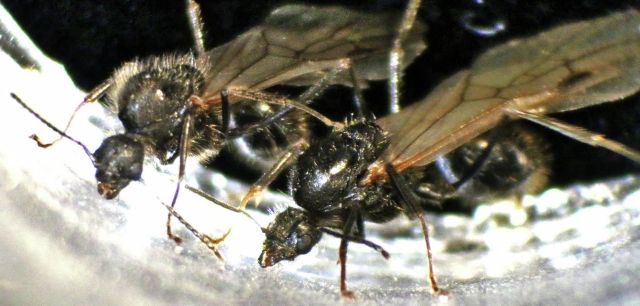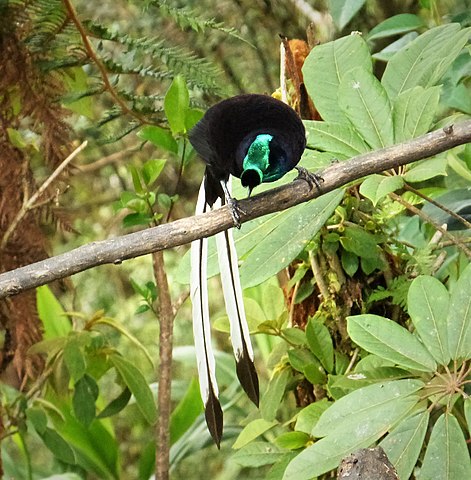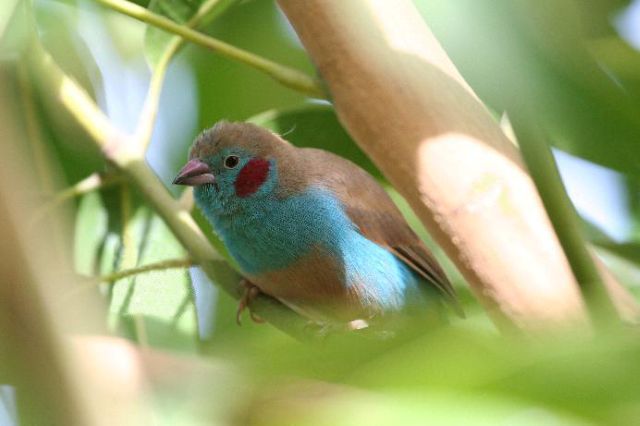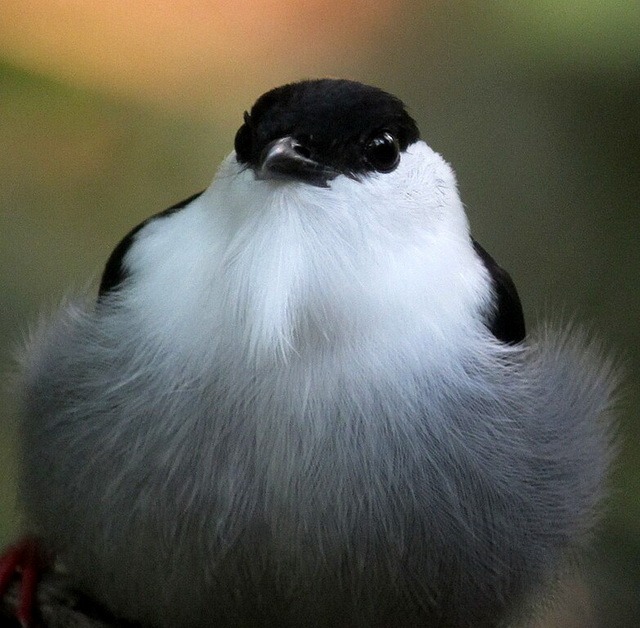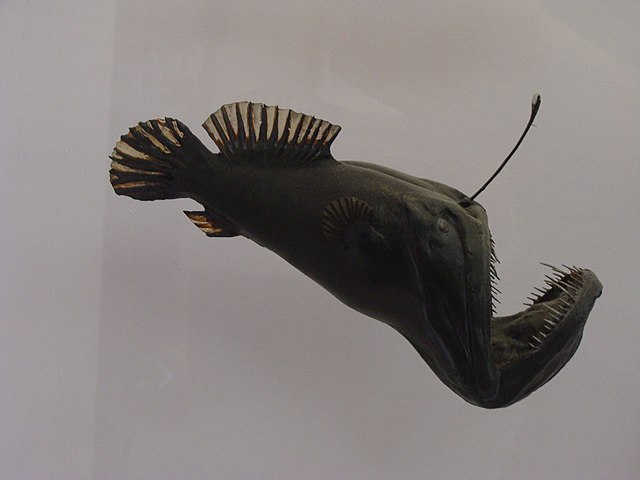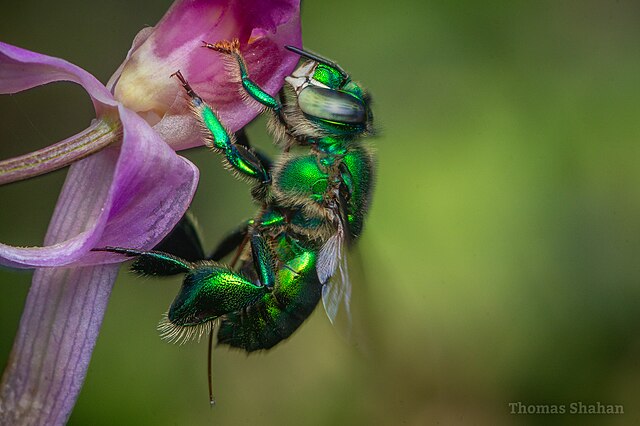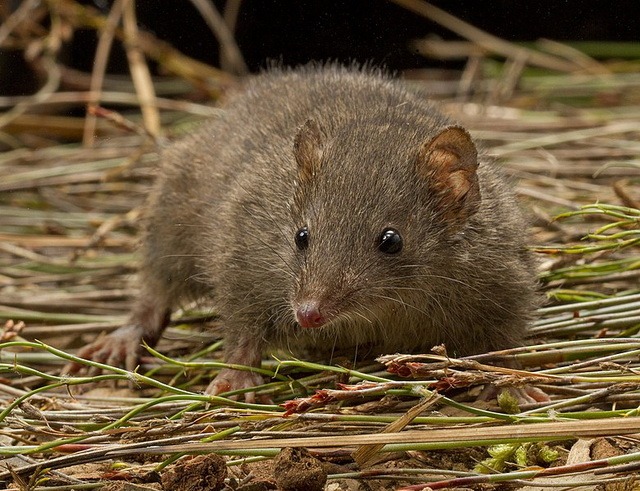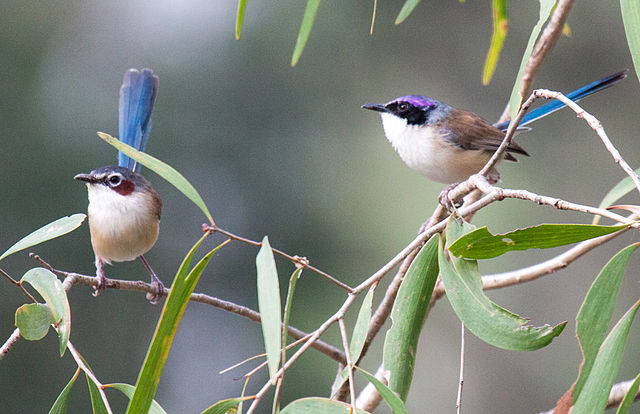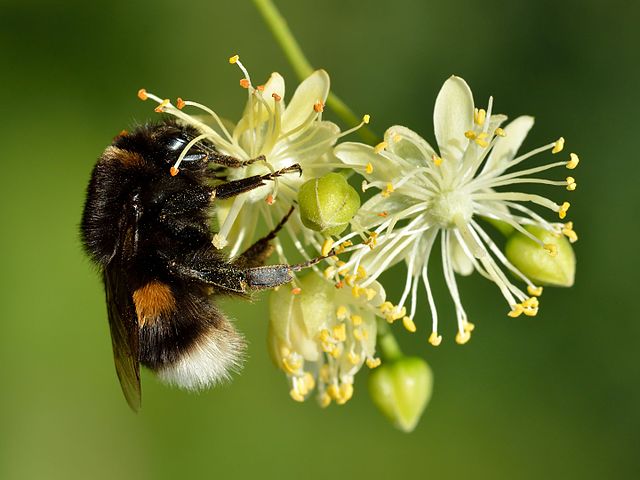Messor ibericus queen produces sons of a different species
Queens of the Iberian harvester ant Messor ibericus have four types of offspring: not only workers, queens, and males of their own species, but also males of another species. Biologically impossible? Yannick Juvé and colleagues explain how it became reality.
Colonies of the ant Messor ibericus in Southern Europe are home to a queen, workers, and males of Messor ibericus – but also males of another species: Messor structor. This is odd, as colonies of Messor structor are absent from most areas where Messor ibericus lives. For instance, on Sicily, where the nearest Messor structor colony is on the mainland, more than 1,000 kilometres away.
It was a mystery how this could happen, but the solution that Yannick Juvé and colleagues now propose is no less puzzling. They discovered that these structor males are sons of the ibericus queen, and therefore brothers of the ibericus males.
It could not get any crazier, although in biology, you are never sure.
Mama’s boys
It will not be a surprise that there is a complicated story behind this. Yet it is an understandable story. Just keep in mind that ants, like bees and wasps, have an unusual system for sex determination.
In most animal and plant species, each individual, male or female, has two sets of chromosomes, small bodies in the cell nuclei that contain the hereditary material DNA; one set comes from the mother, the other from the father. Eggs and sperm each have one set of chromosomes, and after fertilization, a new individual develops with a double set, inheriting characteristics from both parents. But this is not the case with ants, bees, and wasps: females (queen or worker) have two sets of chromosomes, while males have only one. This is because males develop from unfertilized eggs. They are therefore literally mama’s boys; they have no father.
A queen mates with one or more males, stores the sperm and later lays eggs which she may or may not fertilize.
In two steps, Messor ibericus deviated from this pattern.
Hybrid workers
The first step was that an ibericus queen mates not only with males of her own species, but also with those of another species, Messor structor. She stores both types of sperm, and she can apparently distinguish between them. Eggs fertilized with ibericus sperm produce young queens, while eggs fertilized with structor sperm produce workers, which are hybrids with DNA from an ibericus mother and a structor father. If a queen does not mate with a structor male, she cannot produce workers and is unable to establish a colony; interspecies matings are necessary.
It is weird – and it is amazing that fertilization with sperm from another species is possible – but it happens in some other ant species as well. Such species exploit males of another species. These males gain nothing from it, because their sperm only produces worker bees, which do not reproduce. It is sperm parasitism.
Seed eaters
A quick aside: why do ibericus workers have to be hybrids? One hypothesis is that this allows for a distinction between queens and workers. In species with regular, that is, non-hybrid, workers, there is no genetic difference between queens and workers. The difference in form and behaviour that both types of females exhibit as adults is a consequence of the food they receive as larvae. Future queens receive a higher-protein diet, with a greater proportion of animal matter. But Messor species are harvester ants; they collect and eat exclusively seeds. This makes it difficult to differentiate in the diet of female larvae. A genetic difference is then helpful.
And because workers, not queens, are produced with foreign sperm, hybridization does not compromise the inheritance of the ants’ own DNA. Queens, which reproduce, are 100 percent ibericus.
Trick
Back to the main story. The production of hybrid workers was the first step towards the unusual lifestyle of Messor ibericus. It worked, but it confined the species to the area where Messor structor lived. Further dispersion was impossible.
To become independent of the presence of Messor structor, ibericus queens took a second step, Juvé now discovered: they produce structor males themselves, alongside males of their own species. And that step is unique.
Ibericus queens produce structor males by laying eggs with a nucleus that contains only a paternal set of chromosomes. They retrieve this set from a structor sperm cell they have in storage. This requires a trick that has not yet been clarified. Queens may either strip eggs of maternal DNA before fertilization or destroy it afterwards. The result: a son; in this case not a mama’s boy, but a foreign child. It sounds simple, but it must have been difficult to match the foreign paternal chromosome set with the maternal cell machinery.
Domesticated
Once successful, ibericus queens always had structor males in their colony to produce workers and new structor sons. Messor ibericus was no longer restricted to the presence of Messor structor and now has a much larger distribution range.
In the areas where the two species coexist, part of France, Switzerland, and northern Italy, ibericus queens still mate with structor males from structor colonies.
But elsewhere they produce two types of sons: hairy ibericus sons and nearly hairless structor sons. The structor males are an integral part of the life cycle of Messor ibericus. They are isolated from their own species; they do not encounter them, and even if they did, they would not be able to mate with a structor queen. They form a completely domesticated lineage.
Mutual parasites
While structor males initially were abused as sperm suppliers that could not produce fertile offspring themselves (the first step), the situation took on a new dimension after the second step. Domesticated structor males do have offspring that can reproduce: their sons. The ibericus colony ensures this reproduction, so the domesticated structor males are also parasitic themselves. Dependency and parasitism have become mutual.
What seemed biologically impossible, does exist. Apparently, in evolution, everything even remotely conceivable – no matter how improbable or complex – will eventually come into existence.
Willy van Strien
Photos: Males of two species from the same mother: Messor ibericus on the left and Messor structor on the right. Photo from the researchers (Creative Commons CC BY 4.0)
Sources:
Juvé, Y., C. Lutrat, A. Ha, A. Weyna, E. Lauroua, A.C. Afonso Silva, C. Roux, E. Schifani, C. Galkowski, C. Lebas, R. Allio, I. Stoyanov, N. Galtier, B.C. Schlick-Steiner, F.M. Steiner, D. Baas, B. Kaufmann & J. Romiguier, 2025. One mother for two species via obligate cross-species cloning in ants. Nature, 3 September online. Doi: 10.1038/s41586-025-09425-w
Romiguier, J., A. Fournier, S.H. Yek & L. Keller, 2017. Convergent evolution of social hybridogenesis in Messor harvester ants. Molecular Ecology 26: 1108-1117. Doi: 10.1111/mec.13899
